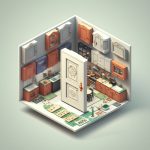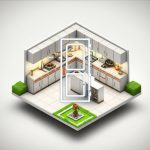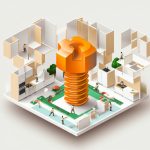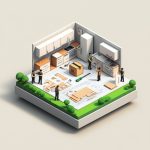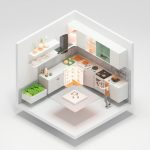Have you heard about “sand beds” for wound healing? It’s a bit of a misnomer! Air fluidized therapy (AFT) beds are a cutting-edge solution. These beds offer incredibly comfortable, supportive surfaces that gently move to accelerate wound healing and prevent pressure sores. This guide will walk you through everything you need to know about these specialized beds – how they work, what makes them effective, and how to use them correctly. We’ll cover the essentials, from maintenance to determining if AFT is suitable for your facility or loved one’s needs. Whether you’re a healthcare professional or simply want to learn more, we’ll provide a clear and precise explanation based on the latest research and best practices.
Understanding Sand Bed Therapy: A Comprehensive Look at Air Fluidized Therapy Beds
Let’s delve into “sand beds,” or rather, Air Fluidized Therapy (AFT) beds. Instead of sand, these beds utilize millions of tiny, silicone-coated beads, creating a constantly shifting, airy cushion. Let’s explore how these beds support healing and whether they’re the right choice for specific situations, with a focus on advancements in wound care.
The Science Behind AFT Beds: How They Work
Imagine a bed filled with these microspheres. Air is continuously pumped through them, creating a dynamic, fluid-like state. This constant movement is crucial. It dramatically reduces pressure points, areas where pressure builds up and can damage skin, leading to pressure ulcers. By evenly distributing weight, the beads also minimize shear forces that can tear skin. The circulating air helps maintain a comfortable temperature and regulates moisture levels, critical for wound healing and the principles of pressure redistribution.
Why AFT Beds Stand Out: Key Benefits
AFT beds offer several advantages, including optimized patient comfort:
- Superior Pressure Relief: AFT beds significantly reduce pressure compared to standard hospital mattresses. This is essential for preventing and treating pressure sores (pressure ulcers). Studies have shown pressure redistribution improvements of up to 45%, making AFT beds a top choice for high-risk patients.
- Advanced Moisture Management: The continuous airflow helps keep the wound area dry and prevents maceration, which can lead to infection. Research indicates these beds can increase evaporative capacity by up to 58 times, efficiently removing excess moisture.
- Exceptional Shear Stress Reduction: The fluidized environment minimizes friction and shear forces that can damage delicate skin and delay healing. Studies have reported shear stress reductions of up to 93%.
- Enhanced Comfort: Many patients find AFT beds exceptionally comfortable. The gentle movement of the beads can be soothing and relaxing, particularly for those who spend extended periods in bed.
Potential Challenges: Considering the Drawbacks
While AFT beds offer significant benefits, it’s crucial to consider potential drawbacks, particularly regarding limitations of air fluidized therapy:
- High Cost: AFT beds are expensive, potentially limiting accessibility, especially in resource-constrained environments.
- Intensive Maintenance: AFT beds require regular maintenance, including cleaning and filter replacement, adding to the overall cost and demanding trained staff.
- Need for Further Research: While evidence supports the benefits of AFT beds, further large-scale clinical trials are needed to compare them to other support surfaces comprehensively. Positive evidence exists, but more definitive studies would strengthen the case.
- Dehydration Risk for Burn Patients: The increased evaporation, while beneficial for wound healing, may lead to dehydration in burn patients if not carefully monitored.
- Repositioning Procedures: Standardized procedures for repositioning patients in AFT beds are still evolving, relying on a combination of guidelines and clinical experience.
Determining patient selection criteria is also crucial.
Ideal Candidates: Who Benefits Most?
AFT beds are particularly beneficial for individuals with:
- Severe pressure ulcers (stages 3 and 4)
- Extensive burns
- Significant tissue damage from various causes
- Post-operative myocutaneous flaps or skin grafts
However, a healthcare professional must assess each patient’s specific condition and needs to determine if an AFT bed is appropriate.
The Future of AFT: Innovations and Advancements
AFT technology continues to evolve. Manufacturers are constantly refining designs and exploring ways to improve affordability. Ongoing clinical trials will provide more detailed information about their effectiveness and future air fluidized therapy enhancements. Standardized care routines, better integration with hospital systems, and increased insurance coverage are needed to fully realize the benefits.
A Collaborative Approach: Roles for Stakeholders
Here’s how various stakeholders can contribute to improving access to and effective use of AFT beds:
| Stakeholder | Immediate Actions | Long-Term Strategies |
|---|---|---|
| Healthcare Providers | Assess patient suitability; develop clear care plans. | Analyze cost-effectiveness; advocate for broader insurance coverage. |
| Manufacturers | Conduct further research; improve design and affordability. | Partner with healthcare systems; explore innovative financing options. |
| Insurance Companies | Evaluate existing evidence; establish fair policies. | Consider value-based payment models linked to outcomes and cost savings. |
| Patients & Families | Discuss options with healthcare providers. | Advocate for access and provide feedback to improve design and protocols. |
Remember, “sand bed” is a colloquial term; the proper name is Air Fluidized Therapy (AFT) bed. It’s a promising technology, and its successful application depends on careful planning, thoughtful implementation, and informed clinical decisions.
Selecting the Right Air Fluidized Therapy Bed for Pressure Ulcer Prevention
Key Considerations:
- Air-fluidized therapy (AFT) beds offer superior pressure redistribution, particularly for advanced (stage III-IV) pressure ulcers, burns, and post-surgical wounds.
- AFT beds are more expensive, require more complex maintenance, and may contribute to dehydration.
- Alternating pressure mattresses are a practical and affordable alternative for many patients, especially those with less severe wounds or limited resources.
- The decision of how to select the best air fluidized therapy bed for wound prevention depends on individual needs, wound severity, caregiver abilities, available resources, and the patient’s environment.
Understanding Air-Fluidized Therapy (AFT) Beds
AFT beds suspend tiny beads in air, creating an environment that distributes pressure evenly, similar to floating on water. This minimizes the risk of pressure ulcers, especially deep ones.
AFT vs. Alternating Pressure Mattresses: Benefits and Drawbacks
Let’s compare AFT beds and alternating pressure mattresses. Both aim to reduce pressure points, but they differ significantly in approach and practicality. Which approach is superior for effective pressure ulcer management?
| Feature | Air-Fluidized Therapy (AFT) | Alternating Pressure Mattress |
|---|---|---|
| Pressure Redistribution | Superior for severe wounds | Good, but less even than AFT |
| Cost | High | Lower |
| Maintenance | Complex, requires specialized cleaning and upkeep | Simpler |
| Dehydration Risk | Higher | Lower |
| Home Use | Limited due to cost, maintenance, and space requirements | More suitable for home use |
Making the Right Choice: A Step-by-Step Approach
- Assess Wound Severity: AFT may be considered for advanced ulcers (stages III-IV). Alternating pressure mattresses may be sufficient for stages I and II.
- Consider Patient Factors: Mobility, comfort, and the risk of dehydration should be considered.
- Evaluate Resources: Assess affordability and the availability of specialized maintenance services. Consider space and access requirements.
- Consult Healthcare Providers: A doctor or wound care specialist can help determine the best option. The importance of professional assessment cannot be overstated.
- Weigh the Pros and Cons: AFT offers superior pressure relief but at a higher cost. Alternating pressure mattresses offer good pressure relief and are more practical and affordable.
Key Considerations for AFT Beds
The increased cost and complex maintenance of AFT beds are significant barriers, especially in home settings and understanding air fluidized therapy’s practicality.
- Kitchen Cabinet Template: Build Your Own Custom Cabinets - October 11, 2025
- Kitchen Templates: Design a Layout That Fits Your Life - October 10, 2025
- Kitchen Unit Templates: Find the Layout That Fits Your Space - October 9, 2025




